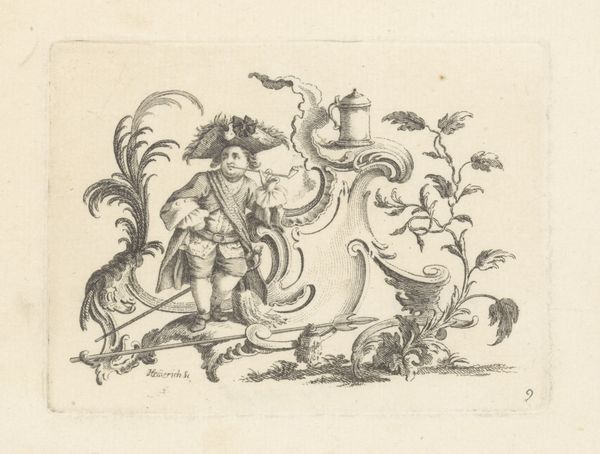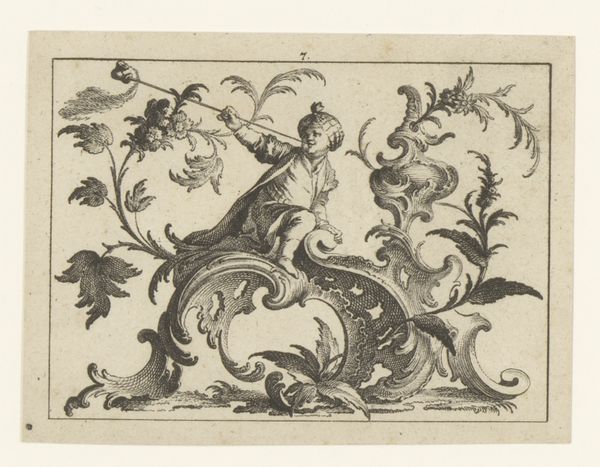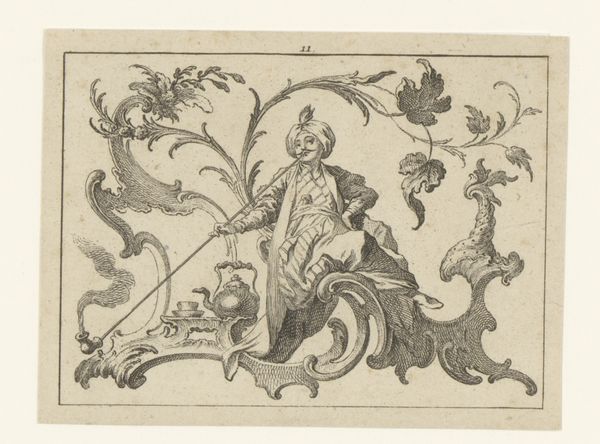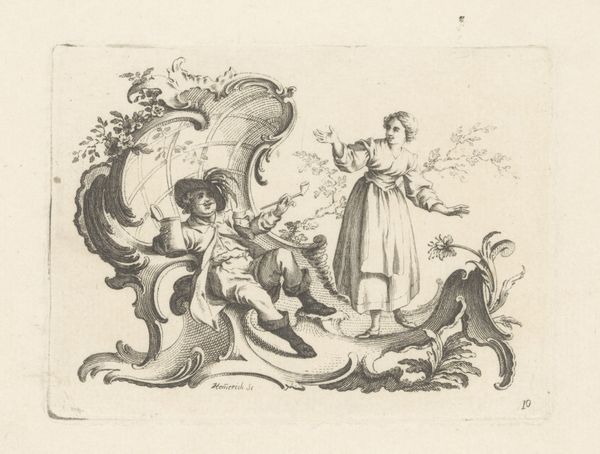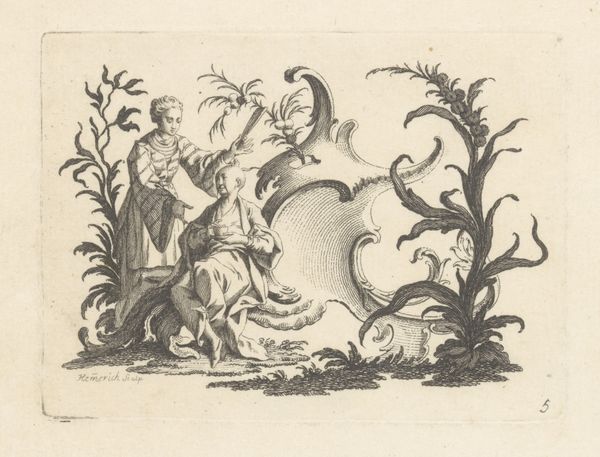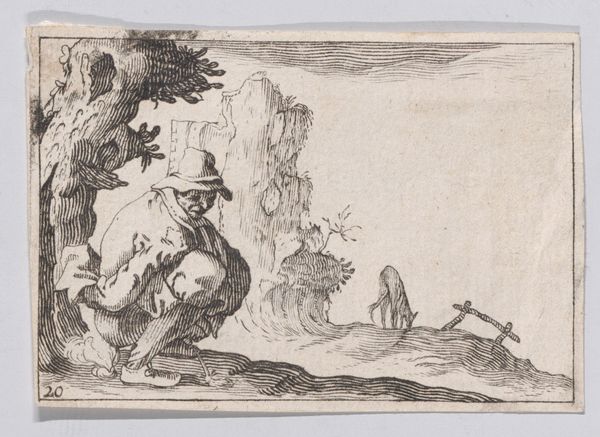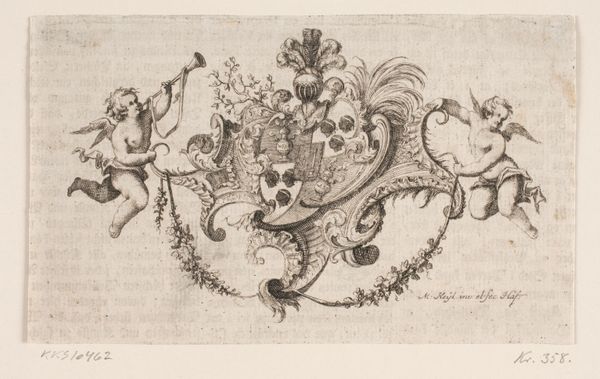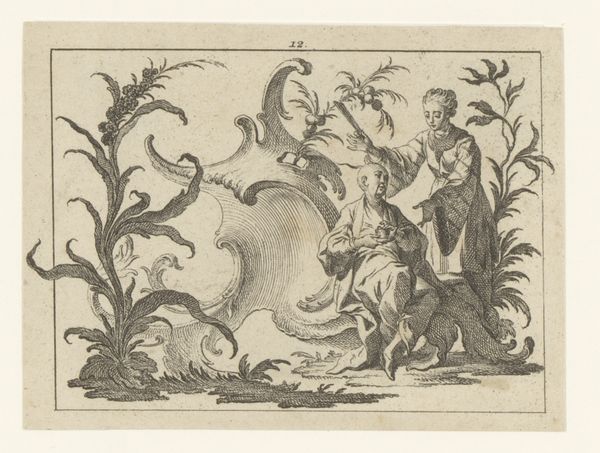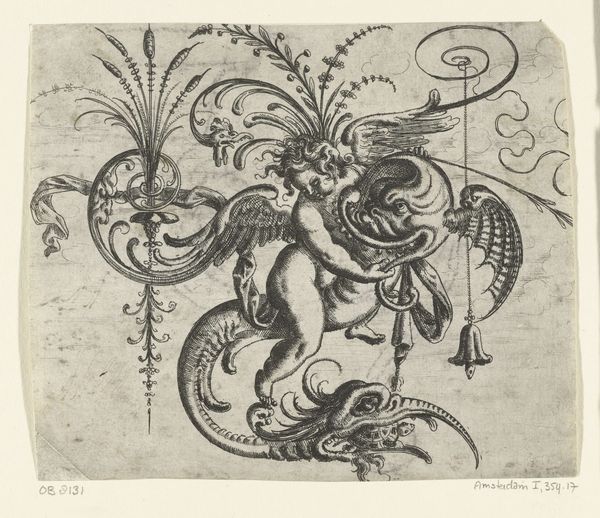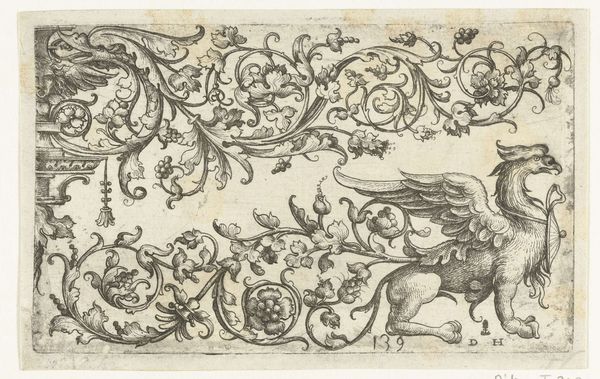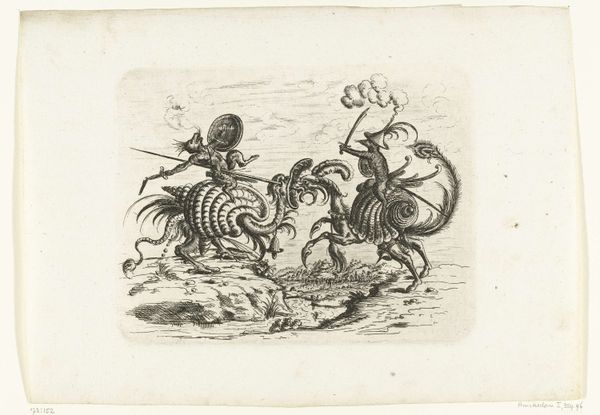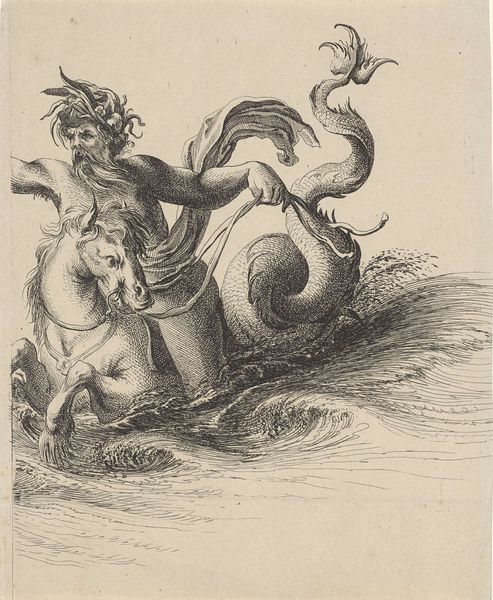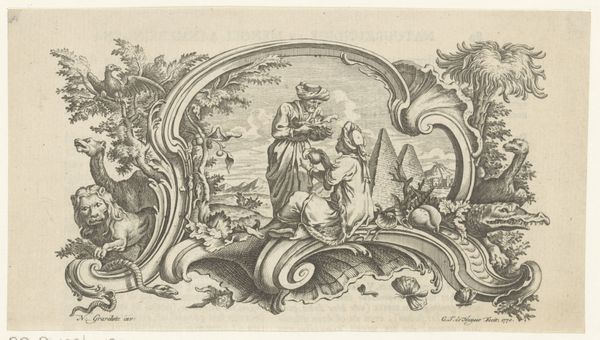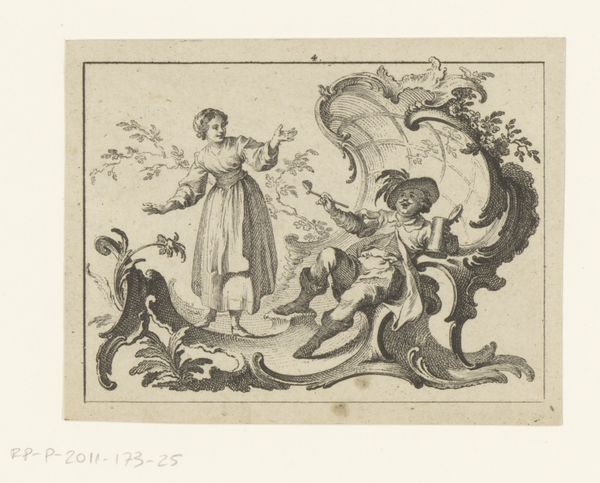
engraving
#
portrait
#
baroque
#
old engraving style
#
figuration
#
engraving
#
rococo
Dimensions: height 78 mm, width 104 mm
Copyright: Rijks Museum: Open Domain
Johann Esaias Nilson made this etching, Pijprokende man leunt tegen een rococo-ornament, sometime in the 18th century. Etching is a printmaking technique where acid is used to cut into a metal plate to create a design. The plate is covered with a waxy ground, then the design is scratched into the ground, exposing the metal. When the plate is dipped in acid, the exposed metal is eaten away, creating incised lines. Ink is then applied to the plate, filling the lines, and the excess ink is wiped away. Finally, the plate is pressed onto paper, transferring the inked design. This process allows for fine lines and detailed images, as you can see in the intricate rococo ornament and the figure of the man. It offered a way of reproducing images, and circulating them widely. In this case, the print aesthetic is very much aligned with the fashion and material culture it depicts. Ultimately, understanding the labor and techniques involved gives us a deeper appreciation for the artistry and the social context in which it was made.
Comments
No comments
Be the first to comment and join the conversation on the ultimate creative platform.
